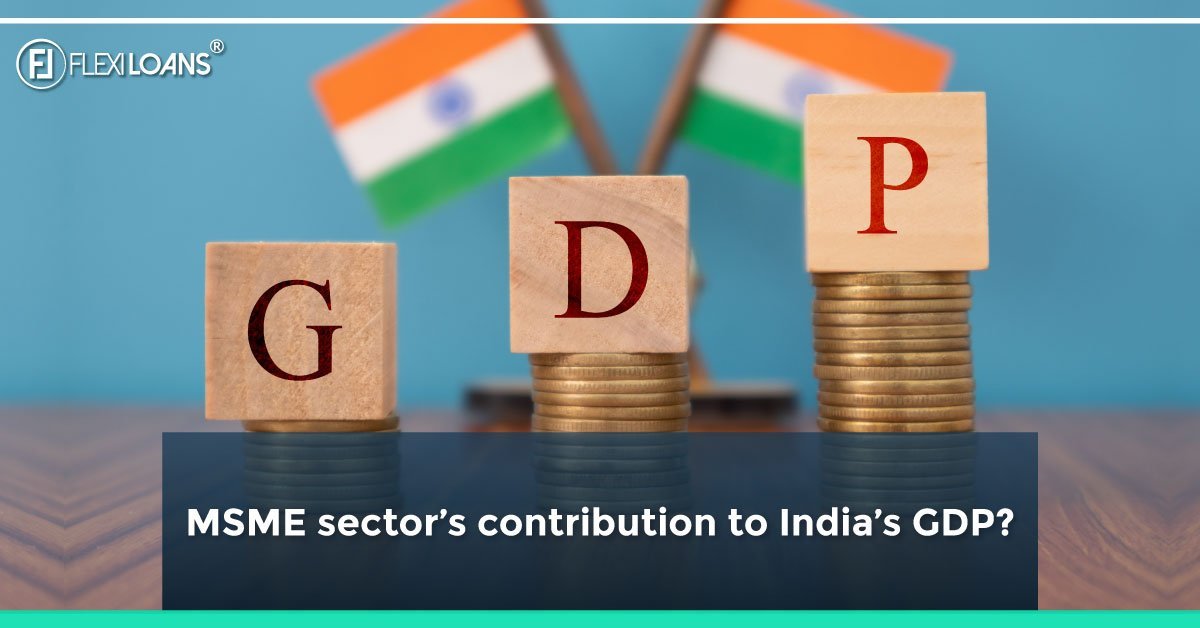Feb 05, 2021

Micro, small, and medium enterprises (MSMEs) constitute an important segment of the Indian economy. It is one of the largest employment-generating segments, with over 110 million people working in an MSME contributing approximately 30% of India’s gross domestic product (GDP). There is scope for further growth, with the number of MSMEs having grown by a compound annual growth rate of 18.5% in 2019–20.
Out of all the MSMEs, 20% operate out of rural India. As interconnectivity improves, there is further potential to engage the rural workforce in productive employment. Some sectors like agribusiness are better served with rural units.
Considering the breakup of the GDP contribution, we observe that MSMEs constitute 6.11% of the manufacturing sector’s GDP and 24.63% of the service sector GDP. Considering the breakup in the number of enterprises, 36% of all SMEs are in trade and 31% are manufacturing firms. Recently, even wholesale and retail traders have been included in this sector.
The textile industry has many workers in small and medium enterprises, and they contributed 2% to the total GDP and 11% of the total manufacturing gross value added in 2019–20. Approximately 10.5 crore people make a living working in this sector. Rs. 80,000 crores worth of revenue comes from village industries such as handlooms, handicrafts, and the Khadi Gram Udyog.
Opportunities under MSME Sector
MSMEs are present in every sector of the Indian economy, be it agriculture, manufacturing, or services. Micro enterprises are those with an annual turnover of Rs. 5 crores, while small enterprises should have a turnover between Rs. 5 crores and Rs. 50 crores. Companies with more than that turnover up to Rs. 250 crores are called medium enterprises.
Leading Innovation and Adoption of Technology
There is great potential for MSMEs to lead technological advancement and innovation. Currently, one problem plaguing this sector is technological obsolescence. There are a few success stories where MSME products have become popular, leading to more sales and even international reputation. The government has also started the Government e-Market portal and says that 57% value of the total orders is going to them.
Growth in Exports
As regards exports, MSMEs products and services comprise over 48% of the total. With the advent of e-commerce and its penetration all over India, SMEs can leverage the opportunities and scale up their business. Unfortunately, the government still has to do much to support the export-led growth of this sector by simplifying supply chain bottlenecks and regulations.
Entrepreneurship
Nowadays, start-up culture is receiving a boost from the government and funding agencies, and most of them begin as MSMEs. It employs so many people that the sector has over 2.5 million units. MSME centers offer both theoretical and practical training. They are equipped with training tools for precise calculations and high-end products.
Social Development
MSMEs carry the tag of being “backbone of the Indian Economy.” The sector can enhance economic growth by initiating many schemes and opportunities. Apart from employment, MSME helps build a more inclusive, sustainable society. This includes a safer space for gender roles, sociological balance, and environment-conscious livelihood, as is happening with self-help groups.
The government has attempted to promote the formation of self-help groups (SHGs) by marginalized members of society to get easier access to formal credit. SHGs find it easier to get quick approvals for their business plan funding needs than individual members who often lack a good credit history and employment record.
Many microfinance institutions have come up to serve the needs of this sector.
Benefits of MSMEs
As MSMEs themselves provide work to other MSMEs, a multiplier effect moves throughout the economy. Over time, these enterprises need other suppliers, and as they grow, they employ more people.
They are an efficient way for new entrepreneurs to try launching businesses with low risk. The sector has a low capital-output ratio, meaning that even a small capital investment can yield significant returns. This is especially the case with technology-based enterprises, where an upfront investment in computers can generate sustained growth.
Belonging to MSMEs also has social benefits. The biggest success story in India is of Amul—a large cooperative but one that aggregates many farmers. Women-led MSMEs have played a great role in empowering them and providing them with self-sufficiency and independence from oppressive norms. There are also some enterprises formed by marginalized workers such as fisherfolks and tribals.
Training centers oriented toward the primary sector help in making tools and provide resources for marketing and distribution as well. It exposes the trainees to hands-on experience for maximizing their skills. These training centers may include international-level programs to increase access to opportunities all over the world. Many tech-related enterprises are quickly gaining traction and becoming larger global organizations.
With more such enterprises, the formalization of the economy can easily bring in a large number of workers into the fold of social security and human development.
MSME Challenges
The greatest challenge is the lack of access to credit, with the credit gap being more than Rs. 17 lakh crores. Approximately 50.7 million of them have no access to formal credit. However, the government has launched the following initiatives:
- MUDRA Yojana
- Stand Up India
- MSME Samadhaan
- ZED
- Credit Guarantee Funds Trust for Micro and Small Enterprises
Still, the SMEs need credit for various things, viz. investing in fixed assets, ordering supplies, employment, training, and expansion plans. Several Non-Banking Financial Companies like FlexiLoans offer loans for MSMEs. These firms also need microfinance and vendor financing options.
SMEs also face labor shortage problems with a high attrition rate. They are unable to pay the kind of salaries demanded by skilled workers. Sometimes the seasonal nature of employment also causes labor problems.
SME Business Loans
FlexiLoans sanctions SME loan amounts from Rs. 50,000 to Rs. 10 crores for SMEs. The terms of repayment are affordable and convenient, with minimal documentation and no collateral requirements. The working capital requirements of these enterprises can be readily met by availing of SME business loans. One can also apply online to get an MSME loan for a business.
Benefits of MSME Registration
The benefits of digitization are yet to trickle down to this segment of the Indian economy on an appreciable scale. The pandemic has also negatively impacted the sector, especially those units that are not technologically enabled. Private investment has to increase to help this segment. Registering the SME helps with such issues.
- It provides a method of dealing with delayed payments.
- It can help get loans for upgrading technology at low interest rates.
- There are some sectors reserved for MSMEs, and registration helps to gain market advantage in those.
- They can avail of a patent registration subsidy of up to 50%.
- It helps relax collateral requirements when applying for MSME loans.
Conclusion
There are many reasons for establishing an MSME: freedom from corporate culture and the pride of creating something that impacts lives rank high among them. FlexiLoans makes it easy to apply online for business loans in India. The government wants to raise the contribution of MSMEs to Indian GDP to 40%. The growth of this sector holds untold gains for the entire country’s GDP and liberates the country by bringing it prosperity.







